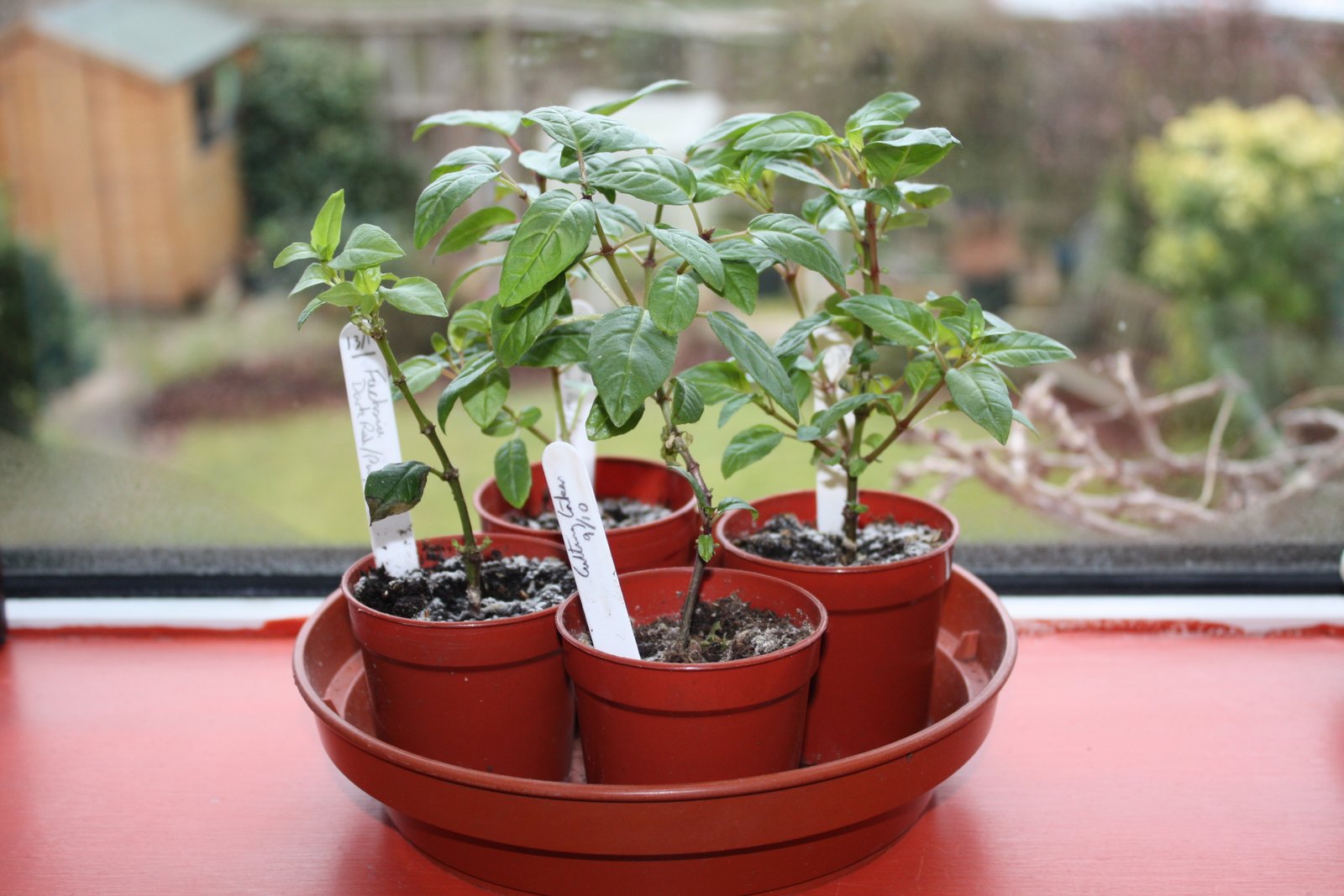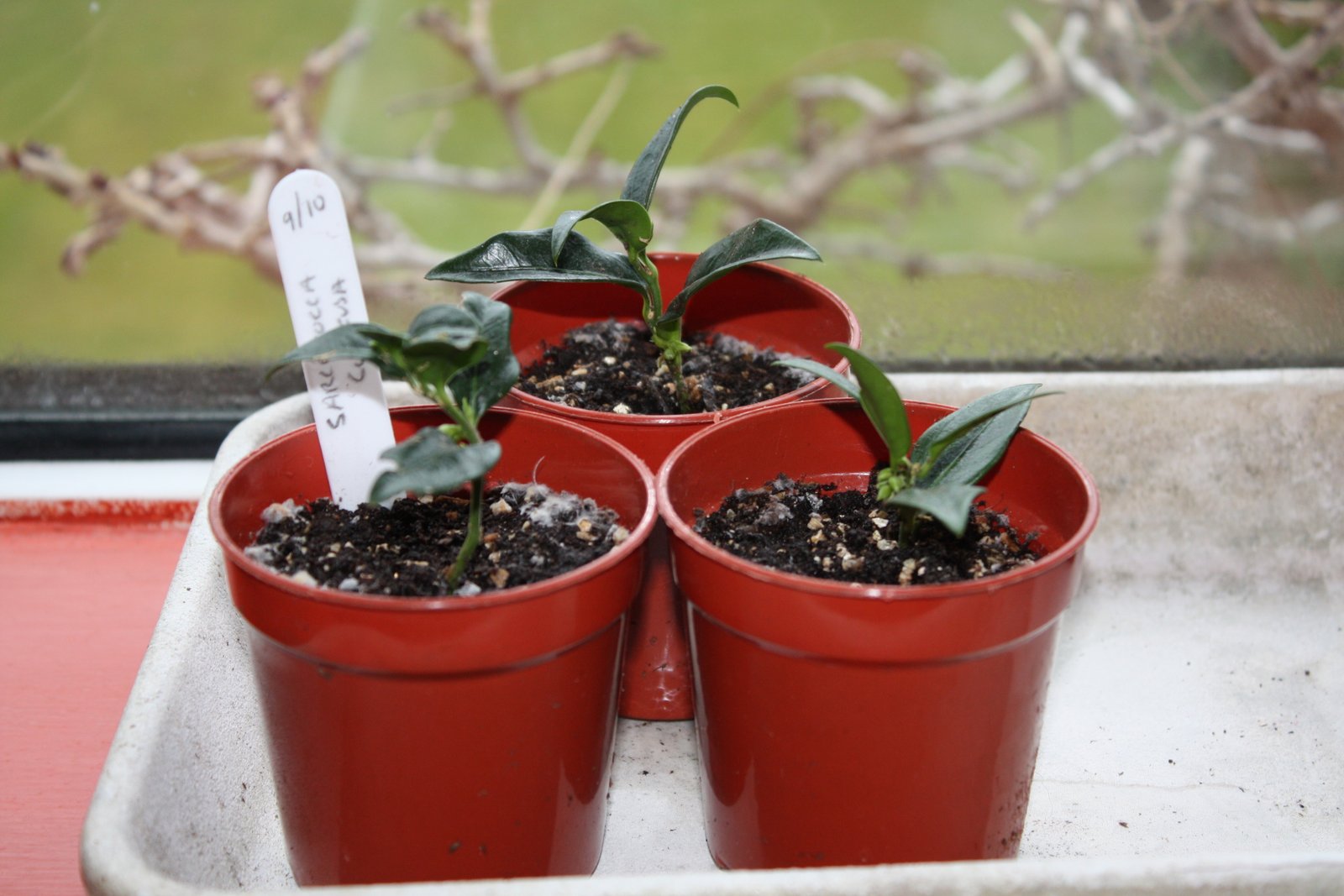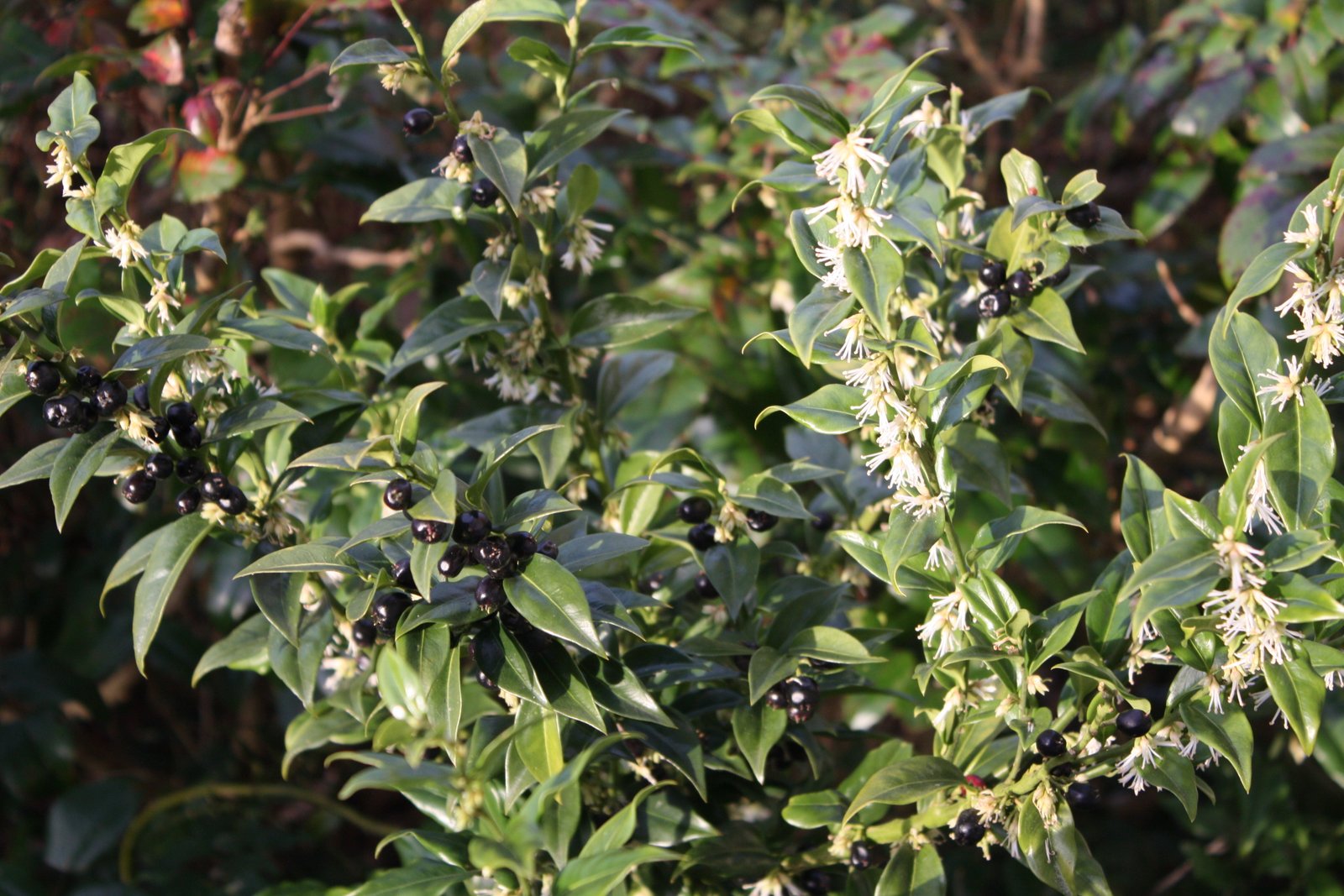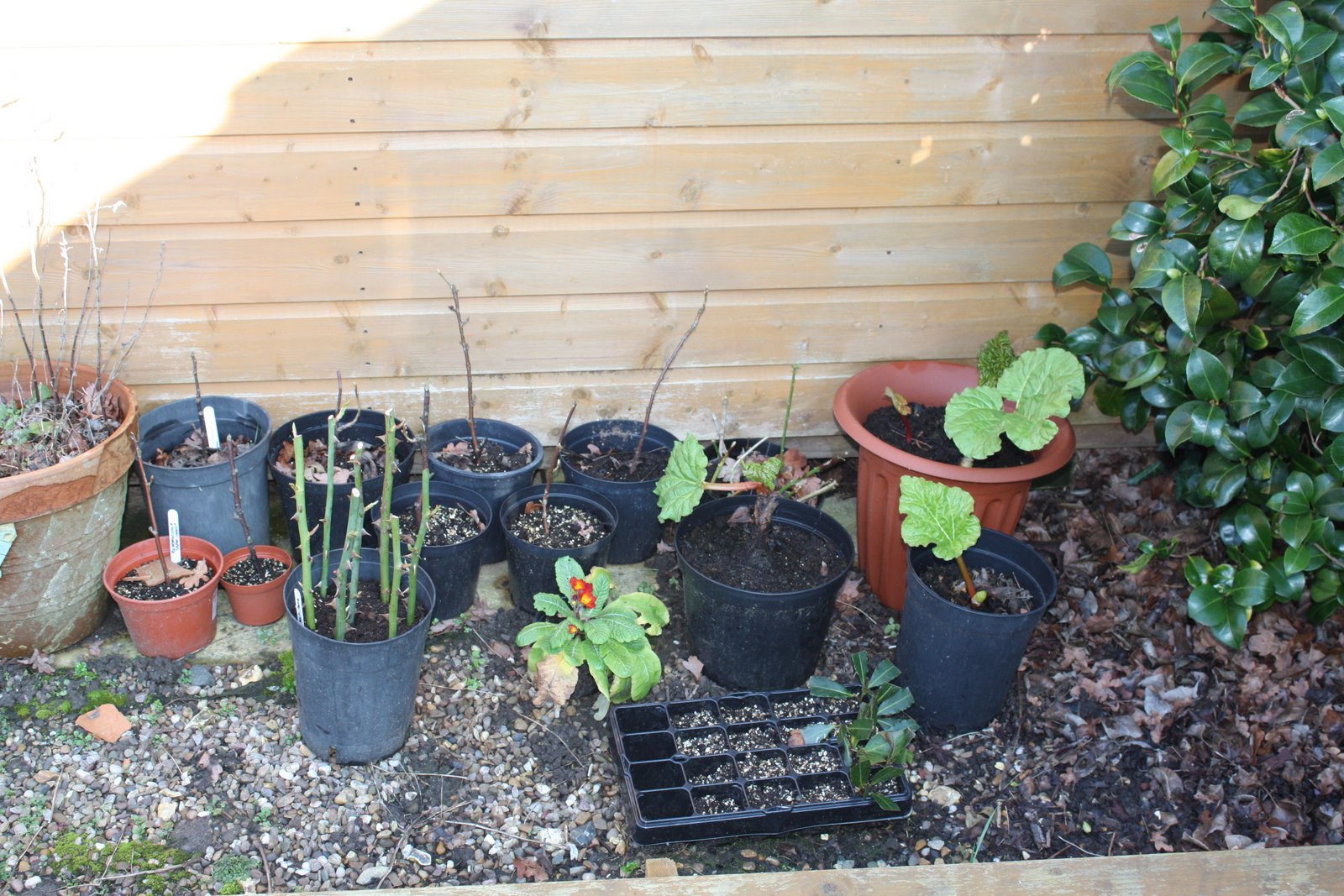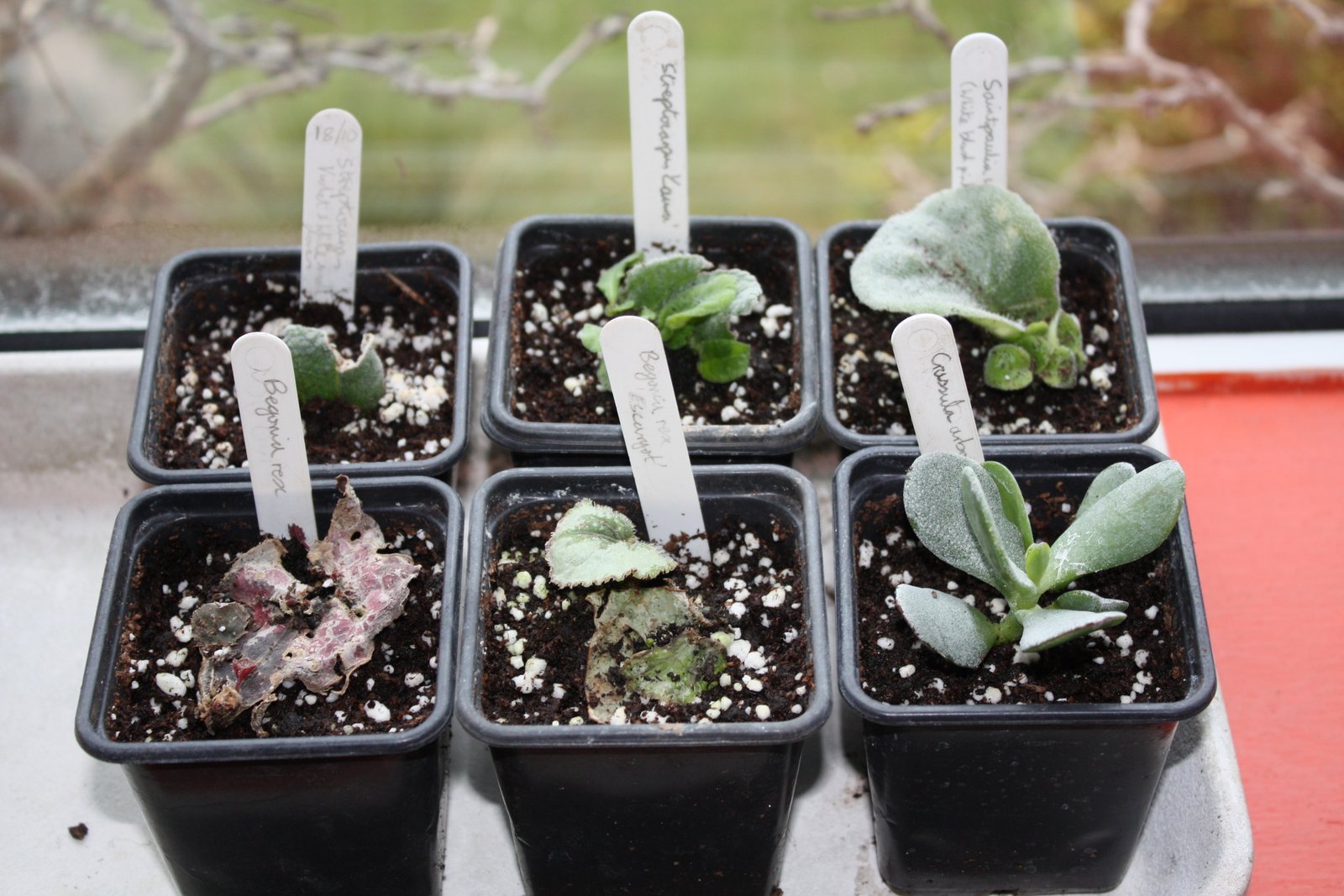… well almost. There are some costs associated with propagation – compost, pots, power if you are using a heated environment, but, even allowing for these, you can end up with plants that are significantly cheaper than if you buy them.
There are many ways to propagate plants, one of which we’ll come back to another time (from seeds). For now the focus is vegetative propagation, cuttings, layering and division. Different types of plants can be propagated in different ways (and some by different methods at different times of year). There are many guides to propagation, books, TV clips and other on-line resources, so I don’t propose to go into the individual details of different techniques. A resource that I have found helpful, because of the detailed step-by-step instructions is the Royal Horticultural Society (RHS) website.
Unfortunately there doesn’t seem to be one bit of the site devoted to propagation, but within the list on this page http://apps.rhs.org.uk/advicesearch/AtoZ.aspx are links to things such as cuttings (of various types), Irises (dividing), Ornamental grasses (dividing), Perennials (dividing) and Layering. The individual pages such as this one on softwood cuttings http://apps.rhs.org.uk/advicesearch/Profile.aspx?pid=307 follow the same general structure describing not just the process of collecting and preparing cuttings, but identifying plants that can be propagated using the specific technique.
The purpose of this piece is to share some of our experiences and to focus on two particular techniques that we have found to be particularly useful. The first is softwood cuttings (for two reasons – firstly it is almost time to be taking these and secondly that these are the cuttings most likely to root quickly. A great advantage of softwood cuttings is that you get a fairly quick result (either success or failure) and if you are successful then you have a young plant ready to grow on during the later spring and summer. This means that you can also get quick results in terms of a display in the same year. We have used this technique for Fuchsias, Hebes, Rosemary and Box to name a few. Softwood cuttings will also root if taken later in the year, but are slower and need more care to get them ready for the following year. Here are some (now safely rooted) young plants from cuttings taken last autumn.
It will be a year or two before the latter look like this
but the Fuchsias will be flowering this summer.
The other technique that we’ve been trying out is hardwood cuttings, see here for the RHS advice http://apps.rhs.org.uk/advicesearch/Profile.aspx?pid=387. The big advantage of this technique is that once you’ve done the initial work, you can pretty much forget about them for 6 months or so until you pot on the successes and get rid of the failures. This little nursery corner in front of our shed shows the blackcurrant cuttings taken early last year that were potted on individually last summer and will be ready for planting out this spring. It also shows the rose cuttings taken late last year, which we’ll be potting on later this year.
In the nursery you can also see some rhubarb plants that are growing from the crown that we divided last year. The key with division is to be bold and not worry too much about damaging your original plant. This technique is mostly used with herbaceous perennials and not only gives you new plants but also rejuvenates the original. We have just finished lifting and dividing some of our ornamental grasses, with some of the divided pieces being immediately re-planted and others potted up so that we can plant them out at leisure (or give them to friends/family).
An interesting example of division was a very weary looking Aloe Vera plant that had been sat on the kitchen windowsill, when we went to re-pot it, we found the best part of 20 plantlets and after dividing them and potting them on, they have grown away really well, to the point where the individual plants are starting to produce their own colonies of new material. Here are some of them.
On the subject of indoor plants, a number can be propagated from leaf cuttings. Here are some examples from the RHS practical course taken last October.
These cuttings do require some care (an environment that will prevent the cuttings from drying out, but is not so humid that they pick up fungal diseases) and patience, the pictures below show that it has taken more than four months for solid rooting to take place followed by the start of top growth, but for those of you who love your house plants, the opportunity to get new examples of your favourite ones may make the results worth the time and effort.

